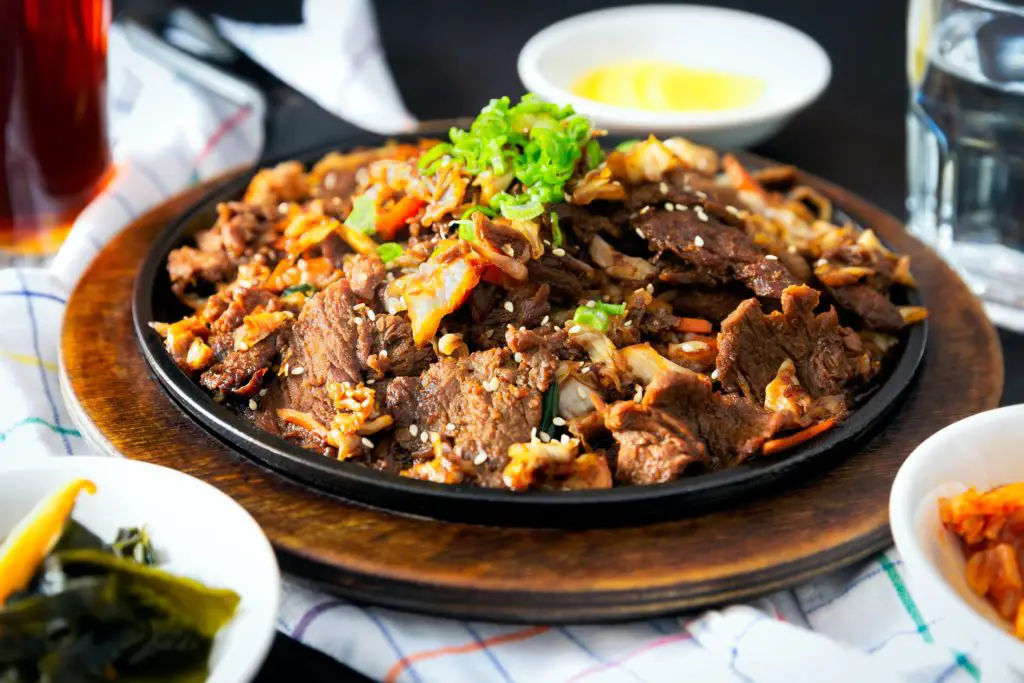What is Jenny Craig Diet?
Losing weight is as simple as managing calories, fat, and portions on Jenny Craig. Jenny’s prepackaged meals and recipes do all three, plus emphasize healthy eating, an active lifestyle, and behavior modification. Personal consultants guide members through their journeys from day one. You’ll gain support and motivation, and learn how much you should be eating, what a balanced meal looks like and how to use that knowledge to achieve weight maintenance. By following the plan, you’re expected to drop up to 2 pounds a week.
Jenny Craig offers four programs: it’s standard “Classic” program, Rapid Results, and Jenny Craig for Type 2, which is designed for people with Type 2 diabetes by including a lower-carb menu, reinforcement of self-monitoring of blood sugar levels, consistent meals, and snacks, and other self-management strategies for weight loss and support for diabetes control. Jenny Craig’s DNA Decoder Plan, which matches members’ genetic markers to their optimal nutritional program and action plan, was introduced in late 2019.
Pros
- No guesswork
- Prepackaged meals, delivered
Cons
- Home-cooked and restaurant meals largely off-limits
- Budget-buster
Popularity
Jenny Craig Diet is Ranked:
- No.3 diet in Best Weight-Loss Diets
- No.3 diet in Best Commercial Diet Plans (Tie)
- No.3 diet in Best Diets for Diabetics
- No.4 diet in Best Fast Weight-Loss Diets (Tie)
- No.6 diet in Easiest Diets to Follow
- No.7 diet in Best Overall Diets (Tie)
- No.9 diet in Best Diets for Healthy Eating (Tie)
- No.9 diet in Best Heart-Healthy Diets
How does Jenny Craig Diet work?
To get started on Jenny Craig, you’ll just need to sign up and walk through your individual plan. While you are losing weight, you eat three prepackaged Jenny meals and two snacks a day (one snack is on your own) – options like cinnamon rolls and chicken Marsala – in addition to up to five servings of fresh fruits and vegetables and at least two nonfat dairy product equivalents.
You’ll get a personalized meal and exercise plan, plus weekly one-on-one counselling sessions with a Jenny Craig consultant.
Note: These are not nutrition professionals – anyone who is “health-oriented and customer-focused” can attend a training course and get certified – but they’ve been trained in the basics of nutrition, exercise, and behavior modification through a curriculum developed by registered dietitians in consultation with a science advisory board. Many consultants are former Jenny Craig members. Your diet, which ranges from 1,200 to 2,300 calories a day, is designed around your current weight, age, gender, height, goal weight, and fitness habits.
The diet lasts as long as you need it to, be it three months or two years. Once you’re halfway to your goal weight, the Jenny Craig consultant begins working with you to cook some meals for yourself again, using Jenny’s recipes and low-fat food prep strategies. After reaching your goal weight, you’ll spend four weeks transitioning back to making only your own meals, while adjusting to a slightly higher number of daily calories. In monthly consultations, you learn weight regain prevention strategies such as nutritional label reading, exercise, and stress management.
One-on-one support plays a big role, although Jenny participants don’t get together for group meetings, which is a part of some commercial diets. Instead, you’ll typically talk with your personal consultant once a week, either in person at a centre or through the Jenny Craig online program, which offers consultations by phone or via video chat. No matter how you connect with your consultant, you’ll discuss how well you did the previous week, and whether you had trouble sticking to the plan. You’ll also choose the next week’s meals and order your food. On-the-go members who opt for Jenny Craig online have access to the same meals as those who pick up their meals in a centre.
In 2018, Jenny Craig launched its Rapid Results plan, which is based on science involving the body clock’s circadian rhythms. The difference is in the timing – you eat during a 12-hour nourishment period, then take a break for a 12-hour rejuvenation period (which includes sleep).
How much does Jenny Craig Diet cost?
Jenny Craig is expensive enough to deter some dieters, but you can choose among pricing levels.
If you want to go all-in, ask about Jenny Craig’s “Complete Weight Loss” plan, which, as of August 2020, costs about $21 per day to receive a week’s worth of breakfasts, lunch, dinners, and snacks, along with personal coaching, available at the company’s centres in person or by phone. The “Essential Meal” plan includes a week’s worth of breakfasts, lunches, and dinners at about $19 per day. The “Simple” meal plan includes a full week of breakfasts and lunch for about $13 per day. Free shipping is available if you have your meals delivered.
Will Jenny Craig Diet help you lose weight?
Probably, if you’re motivated enough to stay on the diet.
- A systematic review published in April 2020 in BMJ, including more than 120 studies, compared 14 named and three controlled diets. At six months, “Among popular named diets, those with the largest effects on weight loss and blood pressure in comparison with usual diet were Atkins, Zone, and DASH,” researchers concluded. Jenny Craig scored among the “most effective” in terms of six-month weight loss alone, reaching nearly 17 pounds. However, at one year, overall weight loss diminished for all diets.
- A 2017 study in the journal Applied Physiology, Nutrition, and Metabolism randomly assigned 133 sedentary, overweight women to follow Curves, Jenny Craig, Weight Watchers, Nutrisystem, or nothing for 12 weeks. The researchers found that Jenny Craig participants lost nearly 12 pounds, on average, which was slightly more than the other three plans. However, the study was designed to test how the plans improved overall fitness, in which case Curves – who funded the research – won out.
- A 2015 review of 45 studies in the Annals of Internal Medicine comparing commercial weight-loss programs (including Jenny Craig, Weight-Watchers, Nutrisystem, and Medifast) found that Jenny Craig participants lost the most weight over 12 months – almost 5% more than a control group given education and counseling.
- Other promising evidence comes from a Jenny Craig-sponsored 2010 study in the Journal of the American Medical Association that tracked 331 overweight and obese women who got free Jenny Craig meals and weekly counseling sessions. The study compared those women with another 111 women who were on their own other than an initial meeting and a six-month follow-up session with a diet counselor, plus sample diets and monthly phone or email check-ins. After 12 months, the Jenny participants had lost an average of about 10% of their initial body weight and after 24 months were still 7% under. Average weight loss for the non-Jenny group was 2.6% and 2.1%, respectively. But keep in mind the thousands of dollars worth of free Jenny products and intensive handholding. And while the study (and the company) noted the unusually high compliance rate – 92% of the women were still in the study at the two-year mark, which Consumer Reports called a “remarkable level of adherence” in a diet analysis in its June 2011 issue – the rate actually was slightly higher for the non-Jenny group.
- A 2013 study in the Journal of the American Heart Association, funded by Jenny Craig, found that overweight and obese middle-aged women on the plan significantly reduced their weight and waist circumference after two years.
- In another study, published in Obesity in 2007, participants who stuck with the plan for about a year shed 12% of their initial body weight, while those who quit in the first month lost just 1%.
- Keys to Jenny’s success may be the prepackaged food and the psychological support of connecting with trained consultants, concluded a 2004 study published in the Journal of the American Academy of Nurse Practitioners. But that same research warned that the program’s high cost may be a roadblock for some.
How easy is Jenny Craig Diet to follow?
The Jenny Craig Diet is ranked #6 in the Easiest Diets to Follow
Jenny’s nearly 100 entrees, desserts and snacks run the gamut, from “new global flavors” like chicken street tacos to desserts that feel like splurges (chocolate lava cake, anyone?). Though portions are small, you’ll eat three meals and two snacks a day, and dinner comes with dessert. Plus, there’s no carb-cutting or elimination of entire food groups. But for the most part, you’ll have an exclusive affair with Jenny’s packaged meals until you lose half the weight you want to lose.
- Meals are convenient with no extra preparation. What’s not to like about meals delivered to your doorstep or picked up at a centre? In terms of lifestyle adjustments, alcohol is allowed in moderation, as is caffeine, and your consultant will help you determine appropriate amounts. The company’s online resources may be helpful.
- You can freestyle with recipes. The Jenny Craig community, housed on the company site, offers low-fat recipes and tips from Jenny Craig members.
- Stay on track if you know you’ll be eating out. Your Jenny Craig consultant will help you plan how to manage social events, holidays, and dining out. The company also provides “Jenny Craig friendly” menus to help stay on track during the holidays. Jenny’s “Weight Loss Journey Guide” and “Maintenance Manual” also offer dining-out tips and strategies.
- You will save time on meal prep. The Jenny Craig diet itself is a time-saver since it emphasizes prepackaged meals.
- You have support systems at your fingertips. The Jenny Craig Community offers a space for members to share tips and encouragement, while the “Healthy Habits” blog provides free information for anyone, including interviews with a registered dietitian nutritionist and healthy cooking techniques.
- Feeling full should not be a problem. Nutrition experts emphasize the importance of satiety, the satisfied feeling that you’ve had enough. Hunger shouldn’t be a problem with this diet. Jenny Craig incorporates “Fresh & Free” additions based on the so-called Volumetrics approach, devised by Penn State University nutritionist Barbara Rolls, which involves choosing the least “energy-dense foods” so you’ll feel fuller for longer. Foods low in fat and rich in water, fiber, and protein are the least energy-dense. Before a meal, for example, you might down a “Soup Addition” to keep your appetite in check. Members are also free to add as many non-starchy vegetables to each meal as their stomachs desire.
- It’s a tastier packaged meal plan diet. In February 2011, Consumer Reports pitted Jenny’s packaged meals against those of its rival, Nutrisystem, and concluded that Jenny took the cake. Testers sampled 32 Jenny products, including entrees and snacks, and rated them overall at the high end of the “good” scale, while Nutrisystem’s meals landed on the low end of “good.” However, both programs have updated their offerings since 2011, so you be the judge.
How much should you exercise on Jenny Craig Diet?
When you sign up, you’ll get a tailored activity plan based on your fitness level and motivation.
The point is weaving activity into your daily life rather than embarking on a rigorous exercise plan. (If you’re already very active, your consultant will analyze your routine to see if you can kick it up a notch, with weight training, say.) You may start by wearing a pedometer, for example, or parking farther away from the mall. Natural activities are emphasized, like walking around while watching a baseball game instead of sitting in the bleachers. So are playful ways to burn calories, such as dancing at home. Fitness isn’t strenuous; it’s part of the pursuit of a healthy, active lifestyle. The goal is to work up to about 30 minutes of moderate activity five days a week.










